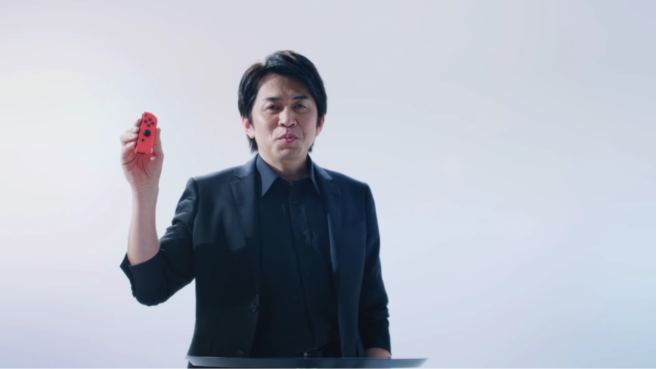Koizumi on Switch’s initial vision, using more well-established tech, Joy-Con colors
Game Informer now has its own interview up with Nintendo’s Yoshiaki Koizumi. The two sides chatted about Switch with a few questions and answers. Koizumi talked about the initial vision for the system and how long it’s been since the plan was put in place, the technical side of things, and Joy-Con colors.
We’ve picked out these excerpts below. You can read the full interview on Game Informer.
On when Nintendo started dreaming about Switch and the initial vision…
We are always thinking about new hardware, and we started working on this plan about three years ago. Since then, there have been a lot of discussions between our staff, and we tried a lot of different things. Nintendo’s concept of a social experience for the game systems we have developed in the past has been to provide a chance to play games together in your living room. To adjust that to the world as it is today, we decided that an unfettered experience that can be enjoyed anywhere would ultimately maximize the number of people who can enjoy our games and be the most fun, and so we decided on this design.
On building off everything else the company has done previously…
We wanted to take a more flexible approach to hardware design this time. For example, previously we have always used a custom “system on a chip” CPU and GPU, but this time we wanted to use more well-established technology, partly so that it would be easier for third-party developers to create games for the system. In that respect, Nintendo Switch represents a break from some of our traditions. However, our previous designs gave us valuable experience and provide insight into what the important parts of a system are, and this is reflected in the design.
On why GPU speed is less important than a console’s other features…
For Nintendo, the axis of improvement for each new generation is the system concept. To make it possible to play a game system at home or on the go seamlessly, we had to take a different perspective and consider factors such as the battery usage of the “system on a chip.” This is a different axis than simply improving processing power, so we selected design elements that fit the type of product we wanted to produce. This was definitely the case for Nintendo Switch.
On the different Joy-Con colors…
The theme of Nintendo Switch is the ability to be able to take it with you and play with someone else, so we wanted to differentiate the colors when playing with two people. As for the specific colors chosen, everyone had various feelings and there were many discussions, including wanting to have red be the right controller, because they both start with ‘R.’ I think we finally arrived at the best option.
